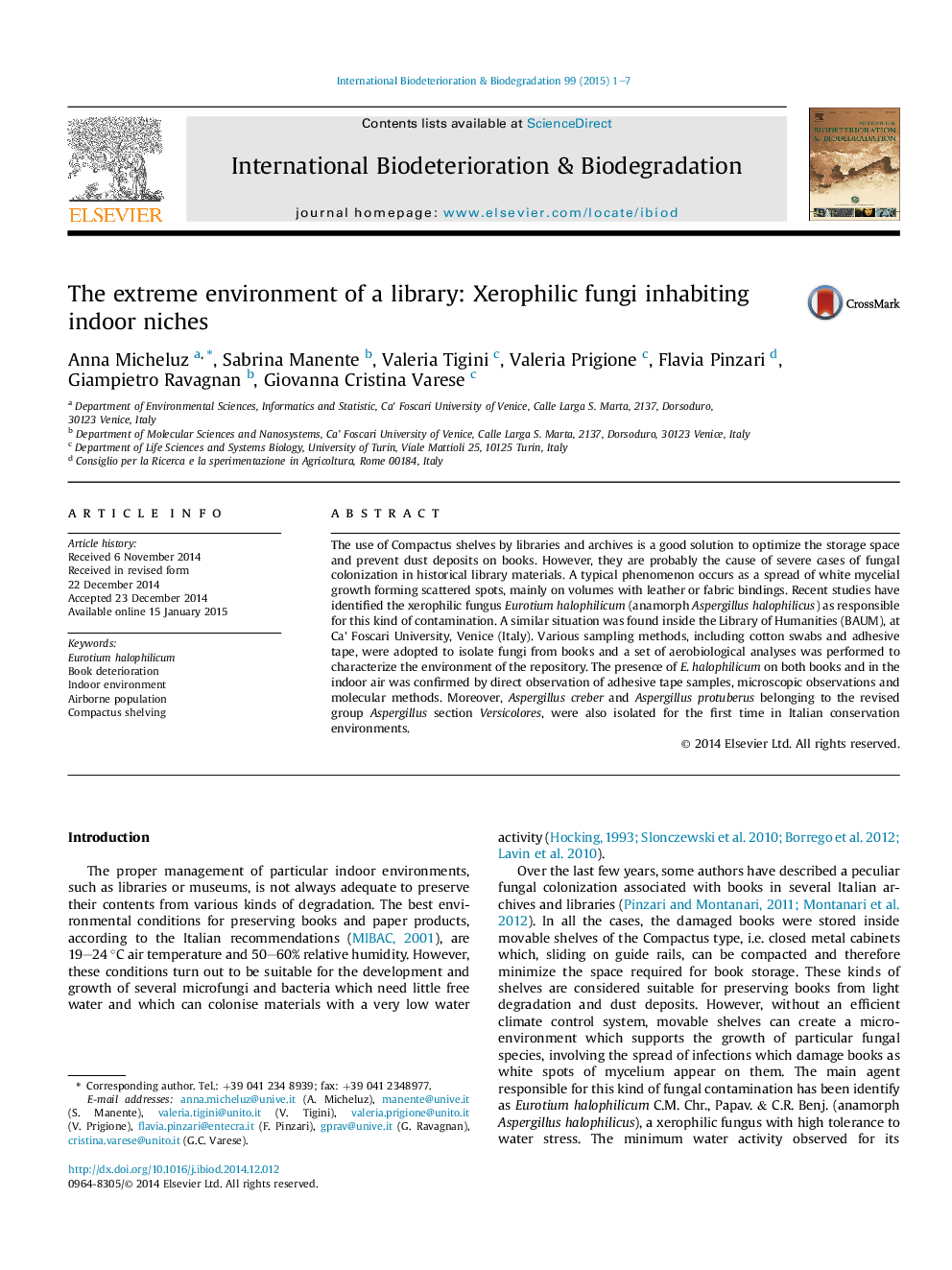| Article ID | Journal | Published Year | Pages | File Type |
|---|---|---|---|---|
| 4364636 | International Biodeterioration & Biodegradation | 2015 | 7 Pages |
•A widespread fungal infection was found in a Venetian Library with Compactus shelves.•Aerobiological in combination with book's covers samplings were performed.•Eurotium halophilicum was recognized as a principle cause of the infection.•Recent new species of section Versicolores were detected as airborne fungi inside library.
The use of Compactus shelves by libraries and archives is a good solution to optimize the storage space and prevent dust deposits on books. However, they are probably the cause of severe cases of fungal colonization in historical library materials. A typical phenomenon occurs as a spread of white mycelial growth forming scattered spots, mainly on volumes with leather or fabric bindings. Recent studies have identified the xerophilic fungus Eurotium halophilicum (anamorph Aspergillus halophilicus) as responsible for this kind of contamination. A similar situation was found inside the Library of Humanities (BAUM), at Ca' Foscari University, Venice (Italy). Various sampling methods, including cotton swabs and adhesive tape, were adopted to isolate fungi from books and a set of aerobiological analyses was performed to characterize the environment of the repository. The presence of E. halophilicum on both books and in the indoor air was confirmed by direct observation of adhesive tape samples, microscopic observations and molecular methods. Moreover, Aspergillus creber and Aspergillus protuberus belonging to the revised group Aspergillus section Versicolores, were also isolated for the first time in Italian conservation environments.
